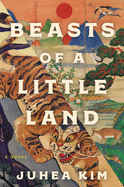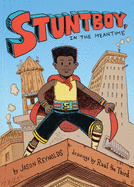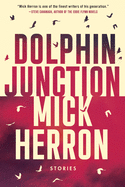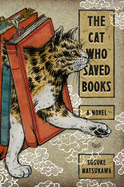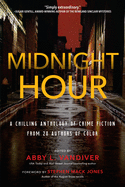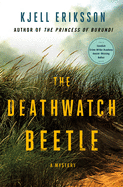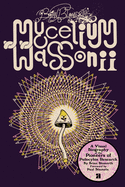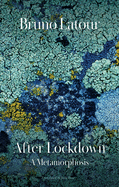Tuesday, December 14, 2021
Books have a soul.... A book that sits on a shelf is nothing but a bundle of paper. Unless it is opened, a book possessing great power or an epic story is mere scraps of paper. But a book that has been cherished, and loved, filled with human thoughts, has been endowed with a soul.
 Listen to the cat. In Sosuke Natsukawa's The Cat Who Saved Books, translated by Louise Heal Kawai (reviewed below), a mysterious bookish ginger tabby solicits the aid of Rintaro, the young temporary proprietor of his late grandfather's Natsuki Bookshop. Through a portal in the back of the bookstore, the cat leads Rintaro on labyrinthian adventures to rescue books from those who would imprison, mutilate or devalue them.
Listen to the cat. In Sosuke Natsukawa's The Cat Who Saved Books, translated by Louise Heal Kawai (reviewed below), a mysterious bookish ginger tabby solicits the aid of Rintaro, the young temporary proprietor of his late grandfather's Natsuki Bookshop. Through a portal in the back of the bookstore, the cat leads Rintaro on labyrinthian adventures to rescue books from those who would imprison, mutilate or devalue them.
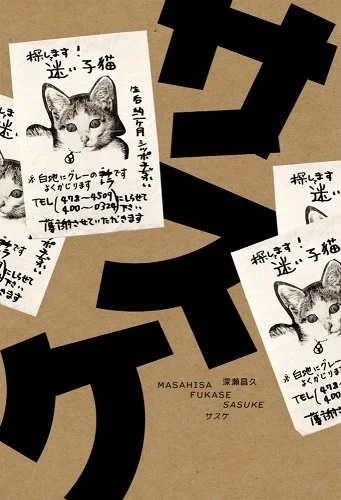 Among other new book/cat favorites, I recommend Masahisa Fukase: Sasuke, text by Tomo Kosuga (Editions Xavier Barral/DAP, $55), a gorgeous collection of images that photographer Masahisa Fukase shot in 1977. "And I carry on working, beaming at my two cats in turn," he wrote," happily figuring out my next shot."
Among other new book/cat favorites, I recommend Masahisa Fukase: Sasuke, text by Tomo Kosuga (Editions Xavier Barral/DAP, $55), a gorgeous collection of images that photographer Masahisa Fukase shot in 1977. "And I carry on working, beaming at my two cats in turn," he wrote," happily figuring out my next shot."
 In The Writer's Cats by Muriel Barbery, illustrated by Maria Guitart, translated by Alison Anderson (Europa Editions, $16.99), we learn the secrets of a bestselling author: "I'll tell you straight: without us, our writer would not be the writer she is.... Because even if we can't speak, we are peerless literary advisors."
In The Writer's Cats by Muriel Barbery, illustrated by Maria Guitart, translated by Alison Anderson (Europa Editions, $16.99), we learn the secrets of a bestselling author: "I'll tell you straight: without us, our writer would not be the writer she is.... Because even if we can't speak, we are peerless literary advisors."
 The Art of Patience: Seeking the Snow Leopard in Tibet by Sylvain Tesson, translated by Frank Wynne (Penguin, $26), offers sharp observations ("Despite our high opinion of ourselves, humankind is ruled by soup") and high adventure ("It was a showdown between our admiration and the Snow Leopard's indifference").
The Art of Patience: Seeking the Snow Leopard in Tibet by Sylvain Tesson, translated by Frank Wynne (Penguin, $26), offers sharp observations ("Despite our high opinion of ourselves, humankind is ruled by soup") and high adventure ("It was a showdown between our admiration and the Snow Leopard's indifference").
While The Cat Who Saved Books actually takes place just before Christmas, all of these titles manage to capture the spirit of the season without really trying to. Here's how: "Thanks to books," Rintaro says, "it's possible to learn not only about the people around us every day, but people living in totally different worlds.... Empathy--that's the power of books." --Robert Gray, contributing editor
Beasts of a Little Land
by Juhea Kim
Beasts of a Little Land is a captivating debut novel from Juhea Kim, an epic of love and war spanning decades that the author somehow smuggles into a brisk, 400-page book. Set in the early 20th century, soon after the Japanese annexation of Korea, the novel follows dozens of characters but focuses chiefly on the fates of Jade and JungHo. The novel begins with an exciting passage where JungHo's father, a hunter, barely survives an encounter with a tiger and a detachment of Japanese soldiers deep in the snow-covered mountains, quickly giving readers the impression of a beautiful country where most people are surviving on a knife's edge. Soon, the narrative moves on to JungHo, a born fighter who becomes the leader of a band of beggars and pickpockets scraping by in Seoul, and Jade, who is sold by her impoverished parents to become a courtesan.
Their paths intertwine again and again at crucial points in their lives, as the decades pass by and they are swept along by the currents of history, particularly by the brutally repressed Korean independence movement. As with any great love story, their relationship repeatedly sparks to life only to be frustrated by events both mundane and historically consequential. The times the characters must survive are often violent and harsh, but they maintain a surprising tenderheartedness, along with a deep need for love and purpose. Readers should expect to be swept along themselves by the waves of passion and tragedy that make the novel so appealing. --Hank Stephenson, the Sun magazine, manuscript reader
Discover: This complex historical novel and passionate love story is set in a Korea suffering under the bootheel of the Japanese colonial regime.
Dolphin Junction
by Mick Herron
Four of the 11 crystalline and often hilarious little nightmares in English thriller writer Mick Herron's Dolphin Junction revolve around Oxford Investigations, a private detective agency run by a husband-and-wife team who face off like a well-oiled motion picture couple. Whenever he's stumped, Joe Silvermann, the dewier half of the pair, asks himself this default question: "What would Marlowe do?" Readers can count on the cast of Herron's glorious first short story collection to do the opposite.
In the title story, a man insists that his wife has been abducted; the police believe she left of her own free will. In "Mirror Images," a mystery writer is convinced that he's haunted by a character he killed off in a book 16 years earlier. In the absurdist but internally logical "The Usual Santas," there's one extra mall Santa at the annual Christmas Eve party, at which everyone must stay in his identity-concealing costume. Herron (Slough House; Dead Lions; This Is What Happened; Joe Country) is an uncommonly good craftsman, tossing off perfect similes ("A lone tree waved on the skyline, like an illustration on a book jacket") with the same effortlessness with which he throws darts that pierce the black hearts of consumerism and capitalism ("On a small enough scale, this is termed theft. When done on an industrial level it is business"). Never mind what Philip Marlowe would do: What would Raymond Chandler do if he were to meet Mick Herron? Probably buy him a pint and suggest that they compare notes. --Nell Beram, author and freelance writer
Discover: In his first collection of short fiction, English thriller writer Mick Herron delivers 11 twisted tales as breezily funny as they are beautifully composed.
The Cat Who Saved Books
by Sosuke Natsukawa, transl. by Louise Heal Kawai
"The tale that follows is pretty outrageous," the second sentence of the delightful The Cat Who Saved Books promises. Indeed, high school student Rintaro Natsuki, already an orphan, has now lost his beloved grandfather. Rintaro is a hikikomori--a shut-in, only comfortable in grandpa's secondhand bookstore--unable even to go to school. He's supposed to be packing up in preparation for living with an aunt he barely knows. But over the 10 days before the moving van is scheduled to arrive, Rintaro will prove to himself that he is stronger than he ever thought, thanks to a talking ginger tabby cat named Tiger.
"I need your help," Tiger repeatedly insists to Rintaro. Presented with three labyrinthine challenges to solve, Rintaro must set free a career reader's neglected books (57,622 finished thus far) imprisoned in locked cabinets, convince the director of the Institute of Reading Research to stop cutting and summarizing books, and persuade the president of the world's number-one publishing company that maximizing sales should not be the World's Best Books' only goal. Every (unsuspecting) hero needs a sidekick, and Rintaro is reluctantly, albeit happily, surprised to get assistance from class president Sayo Yuzuki, "a strong, no-nonsense type" who's been delivering Rintaro's schoolwork as his absence continues. When Tiger returns an unexpected fourth time seeking aid, Sayo will be the reason Rintaro must confront "the gap between idealism and reality" and restore order--literally.
This empowering Bildungsroman, written by Sosuke Natsukawa, a Japanese doctor, and smoothly translated by Louise Heal Kawai, manages to be both whimsical and wise, revealing Rintaro's superpower is imbedded in his love of books. --Terry Hong, Smithsonian BookDragon
Discover: In Sosuke Natsukawa's charming English-language debut, a talking tabby shows a shut-in teen that his love of books is his superpower, as they undertake labyrinthine literary adventures.
Mystery & Thriller
Midnight Hour: A Chilling Anthology of Crime Fiction from 20 Authors of Color
by Abby L. Vandiver, editor
The 20 stories that Abby L. Vandiver has rounded up for Midnight Hour: A Chilling Anthology of Crime Fiction from 20 Authors of Color would have made excellent source material for Alfred Hitchcock Presents, and not just because that classic anthology series was sorely lacking in color.
Vandiver, who also writes as Abby Collette (A Game of Cones), has collected work with reliably inventive plots. In David Heska Wanbli Weiden's "Skin," a Native man trying to go clean is persuaded by a lawyer originally from "the rez, where he'd grown up" to take one more dirty job: the lawyer's client will pay $2,000 for the theft of a rare book made out of "Indian skin." In Frankie Y. Bailey's "Nighthawks," while a white nurse with a secret is being held up with several other customers at a diner by a man in a face-concealing mask, she notes that he seems to be trying to convince his hostages that he's Black. In V.M. Burns's "The Vermeer Conspiracy," a rich white man commissions a Black artist to restore a masterpiece, unaware that the artist has been plotting an act of revenge against him for decades.
One of the pleasures of Midnight Hour is that at the end of quite a few stories, characters reveal that they aren't what they initially appeared to be. While race doesn't figure into every story, it's hard not to read these identity twists as comments on the pernicious stereotyping that some of the book's offerings document and obligingly eviscerate. --Nell Beram, author and freelance writer
Discover: This collection of strong work by writers from a range of racial backgrounds specializes in stories that remind readers that people are not always what they appear to be.
The Deathwatch Beetle
by Kjell Eriksson, transl. by Paul Norlen
A woman's disappearance from the Swedish island of Gräsö smoothly leads to an insightful look at families and the secrets they hold dear in The Deathwatch Beetle, the ninth absorbing procedural by Kjell Eriksson (Black Lies, Red Blood) to be translated from the Swedish.
About four years ago, Cecilia Karlsson seemingly abandoned her successful job and left the home of her controlling parents, with whom she lived. It was shortly before her boss, Casper Stefansson, also went missing, presumed murdered. But rumors have cropped up about sightings of Cecilia in Portugal, sparking the interest of former inspector Ann Lindell, who, despite her retirement from the Uppsala police force, remains a detective at heart.
Ann interrupts her vacation on Gräsö with Edvard Risberg, "her great torment but also her great love," for an unofficial investigation. Ann's inquiry ramps up when Cecilia is spotted on the island, attending the funeral of an old friend.
Eriksson delves deeply into Cecilia's motives for vanishing: she was angry at what she saw as betrayal by former friends, tired of being mansplained, especially by her father, who seemed to have her life under constant surveillance. Cecilia would rather hide out in an abandoned, mold-filled cabin where the wood-boring deathwatch beetle is "scratching and gnawing in the wall" than sleep in her parents' comfortable home.
The Deathwatch Beetle strongly examines the vagaries of families, including Ann's relationship with her son, Erik, and her re-connection with Edvard, with whom she plans to live a quiet rural life. But part of Ann admires Cecilia's decision to just leave everything behind. --Oline H. Cogdill, freelance reviewer
Discover: A woman's disappearance from a Swedish island spurs a retired police detective's unofficial investigation in this absorbing procedural.
Graphic Books
Mycelium Wassonii
by Brian Blomerth
Cartoonist Brian Blomerth returns with a second eye-popping paean to the history of psychedelics in Mycelium Wassonii. The book is a spiritual successor to Blomerth's 2019 graphic novel Bicycle Day, an exuberant, surreal account of Swiss chemist Albert Hoffman's discovery of LSD. Here, Blomerth details the careers of R. Gordon and Valentina Wasson, pioneers of ethnomycology and key figures in popularizing psilocybin mushrooms in the West.
The Wassons' adventures in mycology begin in a cabin in Upstate New York, during the couple's honeymoon in 1927, where Tina proselytizes to a reluctant Gordon about the consciousness-expanding powers of fungi. Blomerth's art is likewise expansive. His full-page compositions are boldly designed and richly detailed: mushrooms spring from the earth and chitter away in an alien language; Tina's headscarf resembles a wizard's cap, suggestive of a mystic or a prophet; waterfalls shimmer with multicolor gradients, evoking a heightened state of awareness.
Years later, the two collaborate on a "cookbook turned treatise," merging mycology and anthropology. Their research eventually brings them to Oaxaca, where they encounter the Mazatec healer María Sabina, a "first-class curandera" (or medicine woman). They document her use of psychoactive mushrooms in ceremonies--despite her warning that "showing the photos or telling anyone will be a betrayal"--and, in so doing, unleash a tide of Western interest that transforms the Mazatecs' relationship to the mushrooms.
While Blomerth is clear-eyed about the pitfalls of Westerners' historical embrace of psychedelics (he prefers "entheogens," a name "unvulgarized by hippy abuse"), Mycellium Wassonii is above all a celebration: an ecstatic visual fantasia in praise of both the mushroom and the movement that has sprung up around it. --Theo Henderson, bookseller at Ravenna Third Place Books in Seattle, Wash.
Discover: Brian Blomerth's graphic novel is an eye-popping celebration of psilocybin mushrooms and the mycologists who popularized them.
Biography & Memoir
Murakami T: The T-Shirts I Love
by Haruki Murakami, transl. by Philip Gabriel
"Objects just seem to collect me, of their own volition," insists Haruki Murakami (First Person Singular): LPs, books, magazine clippings, pencil stubs and, of course, T-shirts. Murakami T might detour from his global bestsellers, but it's a delightful glimpse into iconic Murakami through his casual wardrobe. "Now that I've lived this long, and find myself with enough T-shirts to write a whole book about them, frankly it seems kind of scary," he muses. Murakami T originated as a series of essays for the Japanese men's magazine Popeye. Each essay loosely groups the shirts by theme, enhanced here with photographs of the featured choices. The collection's first photo proves especially memorable--a yellow T emblazoned with "Tony" Takitani House D that inspired a short story and film.
Not every shirt engenders such long life. Some are contemplative: "Meaning Unknown." Some are just for fun: "Whiskey." Some are comically self-referential: "Keep Calm and Read Murakami." Some underscore his well-known passions for music--"Record Stores Are a Blast"--and running--"Can't Help Thinking About a Nice Cold Beer." Interwoven throughout are sly, revealing comments about what he'll actually wear: no Ivy League names, cute animals, Superman and Batman logos; yes to no-images-but-has-random-writing, Volkswagen, plain. An invitingly chatty ending interview with writer Kunichi Nomura spotlights additional Ts left out of essays, including a most striking "DONALD ERES UN PENDEJO," a gift from fellow author Paul Theroux.
Murakami is both a savvy consumer, especially of international thrift stores, and an entertaining guide through personal and pop culture history. Translated by Philip Gabriel, every page is a whimsical discovery, especially satisfying for voyeuristic groupies. --Terry Hong, Smithsonian BookDragon
Discover: Haruki Murakami takes a charming break from his substantial literary bestsellers to chat captivatingly about his substantial T-shirt collection.
Social Science
After Lockdown: A Metamorphosis
by Bruno LaTour, transl. by Julie Rose
While much of the public dialogue about Covid-19 centers on reducing harm, on recovery and on the resumption of "normal life," Bruno Latour's After Lockdown: A Metamorphosis, translated from French by Julie Rose, analyzes humanity's changed existence in the pandemic. He does this in parallel with close reading of Franz Kafka's legendary novella, The Metamorphosis, and argues that the pandemic's first 20 months are a preview of the world ahead. He foresees a world in which life on Earth will increasingly be determined by confrontations between humanity's way of life and the limitations of a deteriorating environment that is no longer as much a natural world as it is a world built by and for humans.
Though After Lockdown is a thought-provoking, philosophical text, one need not be a French theorist to appreciate its penetrating analysis of the stultifying lockdown experience and the networked essence of life, the eccentric humor of its allegorical fables, and Latour's intense commitment to understanding the world. Latour writes with intellectual gravitas, but in his style complexity feels almost like a compliment to the reader. He does not condescend by dumbing things down, and instead treats the reader as an equal mind.
So buckle in to learn new words--e.g., bioclastic, holobiont--and new facts about termites. While sobering in its vision of the future, Latour's After Lockdown is a constant reminder of the pleasures of a passionate theoretical and literary mind, the kind of mind that one can hope will persist through whatever comes. --Walker Minot, teacher, freelance writer and book reviewer
Discover: A French theorist examines humanity's transformed way of life through the Covid-19 pandemic with a forward-looking, thought-provoking thesis shaped by Kafka and an eccentric sense of humor.
Profit and Punishment: How America Criminalizes the Poor in the Name of Justice
by Tony Messenger
Tony Messenger spent years traveling across Missouri, uncovering the stories of people affected by court fees and fines--work that he calls "the most important work I have ever produced as a journalist." That work, which earned him the 2019 Pulitzer Prize for Commentary, ultimately resulted in Profit and Punishment, a timely and important revelation of "a national crisis hidden in plain sight."
Messenger's work lies at the "intersection of poverty and criminal justice," drawing deeply on the experiences of three single mothers--and a multitude of other individual stories in passing--to illustrate how the justice system has evolved to become a money-making scheme, often "shouldered by the most vulnerable among us." Through court fees and fines, as well as pay-to-stay bills ("board bills") charged in many states for time spent in jail, the system generates income to support itself, "money earmarked by lawmakers as a backdoor tax" and funneled into municipal budgets, sheriff retirement funds, judge and clerk salaries and more. Messenger posits that more than 80% of the cases that go through the court system are for misdemeanor charges, and the vast majority of those paying into the system are living below the federal poverty line.
Messenger grounds relevant data and theory of a broken system in the experiences of those who interact with it. With each case, Messenger drives home the point: this is the criminalization of poverty in action. It's "an American epidemic... [a] tragic cycle of profit and abuse" that should enrage anyone who comes to understand it--and Profit and Punishment is the perfect place to start that understanding. --Kerry McHugh, freelance writer
Discover: Pulitzer Prize-winning journalist Tony Messenger explores how poverty is criminalized in the United States, grounding data and facts in the stories of those most affected by these policies.
Poetry
All the Names Given: Poems
by Raymond Antrobus
Poet Raymond Antrobus stunned the literary world with his debut, The Perseverance, which won the Rathbones Folio Prize. His second collection, All the Names Given, proves the depth and clarity of his voice as it draws upon the complicated history of his surname and the interrelation of sound and silence, mingling the tangible with the transparent.
In these poems, Antrobus cross-pollinates time and space, each poem reminding readers of the ways a human can, in fact, be two things at once: here and there; now and then; fluent in the formal and the fractured musicality of language. Inspired by the work of Deaf sound artist Christine Sun Kim, Antrobus (also Deaf) interjects [Caption Poems] throughout, reframing closed captioning as a creative act, each description providing layers of unexpected complexity, such as "[sound of something left out]" or "[sound of mirror refusing reflection]."
Whether confronting the raw truth of new love or shared pain, Antrobus creates unforgettable images, simultaneously searing and tender, as in "For Cousin John": "I prepare silence,/ practise each time for a calm dinner/ but you lift a fork, unsettle the territory." And later: "Cousin,/ we all alone in these streets. I wish you/ horses in rain and fields of broken gates," before concluding "Cousin, why couldn't you/ let us see what you were burying? Cousin/ I wish sunlight on all your fields." Often bold and direct, these poems are stunning in their generosity: two hands open, offering abundance. --Sara Beth West, freelance reviewer and librarian
Discover: Deaf poet Raymond Antrobus's powerful collection winds readers between text and image, sound and silence, while tackling questions about identity, family and trauma.
Children's & Young Adult
Stuntboy, in the Meantime
by Jason Reynolds, illus. by Raúl the Third
In this funny, action-packed graphic novel, readers are introduced to Portico Reeves (aka Stuntboy), a Black fourth-grader and superhero. Portico lives in the biggest house on the block, Skylight Gardens, and suffers from terrible cases of "the frets" (anxiety). Apartment 4D is home to Portico, his mom and dad, Gran Gran and their cat, A New Name Every Day. One-and-a-half doors down in apartment 4E is Zola Brawner, Portico's best friend and the only person who can get him to de-fret. Herbert Singletary the Worst, Portico's arch-nemesis and bully, lives behind the half-sized door between 4D and 4E. Herbert, who causes many of Portico's cases of the frets, also triggers Portico's realization that he is a superhero--his superpower is sacrificing himself to make sure all the other heroes stay safe. Those heroes? The eclectic group of people who live in Skylight Gardens. As Portico tries to dodge Herbert's bullying and cope with his parents' constant arguing, Stuntboy swoops in to save his neighbors and, hopefully, his parents' marriage.
This easily accessible and hilarious graphic novel is broken up into short episodes interrupted by commercial breaks with helpful tips on stunts. National Ambassador for Young People's Literature Jason Reynolds (Track series) creates a text that makes for a quick and easy read and the accompanying digital illustrations by Raúl the Third (Strollercoaster) match the tone perfectly. The artist uses loose, sketchy lines to show movement and adds pops of color to his black-and-white art to focus the eye on important details. Stuntboy, in the Meantime is a perfect book for seven- to 12-year-olds. --Natasha Harris, freelance reviewer
Discover: In this witty graphic novel, a secret superhero figures out how to cope with his changing life.
Dream Street
by Tricia Elam Walker, illus. by Ekua Holmes
Dream Street by cousins Tricia Elam Walker (Nana Akua Goes to School) and Ekua Holmes (Voice of Freedom; Saving American Beach) is a formidable, potent antidote to a world that is often unkind to children, especially children of color. Here, "the children who live and play on Dream Street can become whatever and whoever they want, because their dreams are nourished and cared for."
On Dream Street, brothers Yusef and Biko never leave their home without crowns because, their mother reminds them, "their ancestors... were queens and kings with dreams they never gave up on." Belle, who is going to be a lepidopterist, catches butterflies but she never traps them for long because "everything has a right to be free." Future librarian Zion is already in the library, transported by "skyscraper-tall piles of books that take him on adventures around the world." While the children dream, elders enable. Mr. Phillips plans a jazz band with his five sons; Ms. Paula teaches African dance; Ms. Sarah, Dream Street's longest resident, has endless stories to share.
Dream Street is real--and why shouldn't it be? It's based on Walker and Holmes's Roxbury, Mass., childhood neighborhood. The two had a dream that someday they'd "create a picture book together about everyone they [knew] and [met] on Dream Street." Their gratifying dream-come-true is made magnificent by Caldecott Honor artist Holmes's gorgeously vibrant, multi-layered and multi-textured collages. Each illustration features the residents of Dream Street, making people and their stories the soul of the book. Readers are welcomed into a landscape of acceptance, respect, nurturing and endless possibilities in Dream Street. --Terry Hong, Smithsonian BookDragon
Discover: Cousins Tricia Elam Walker and Ekua Holmes make their childhood dreams come true by creating a powerful book about the best street in the world, on which all children are equally welcome.


